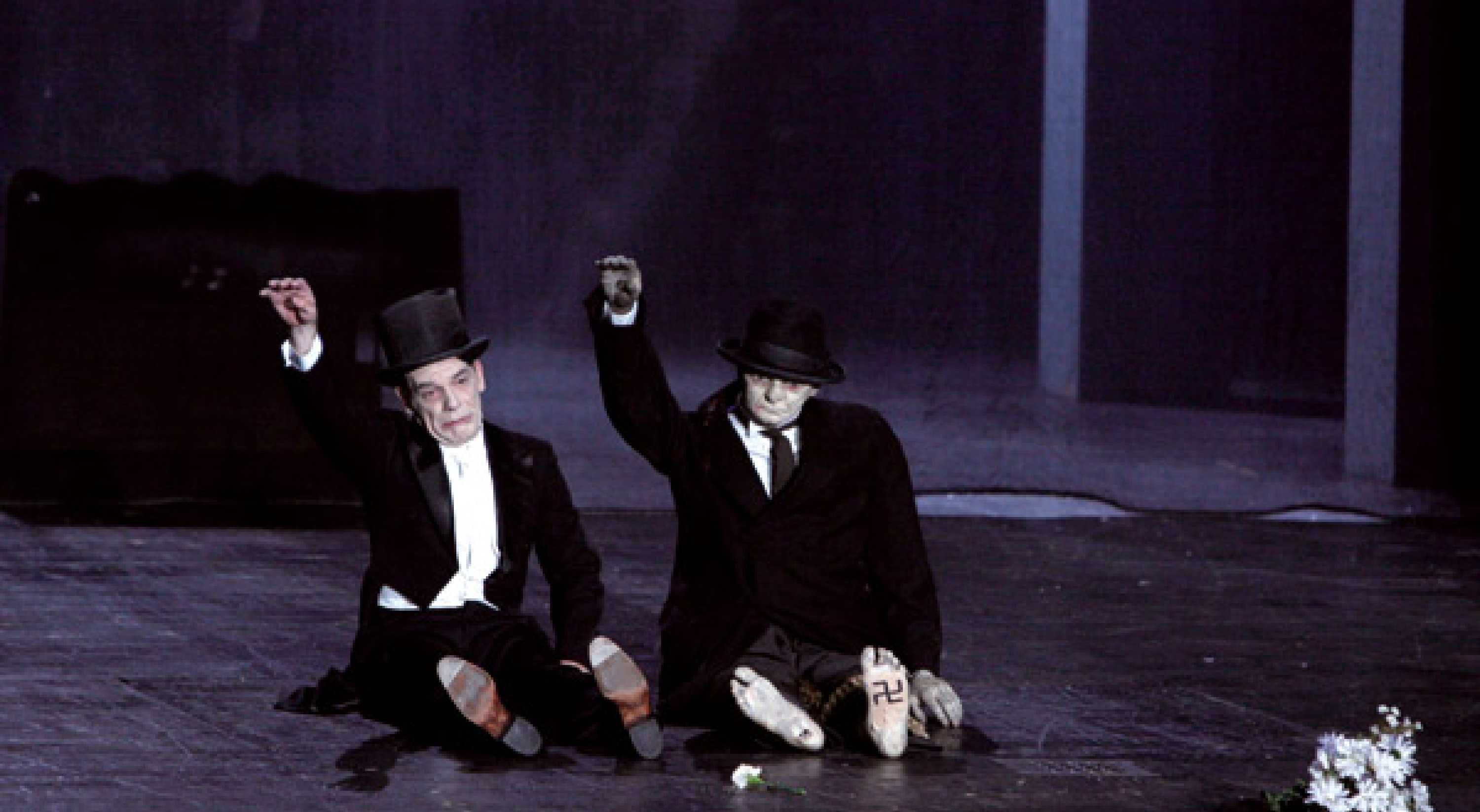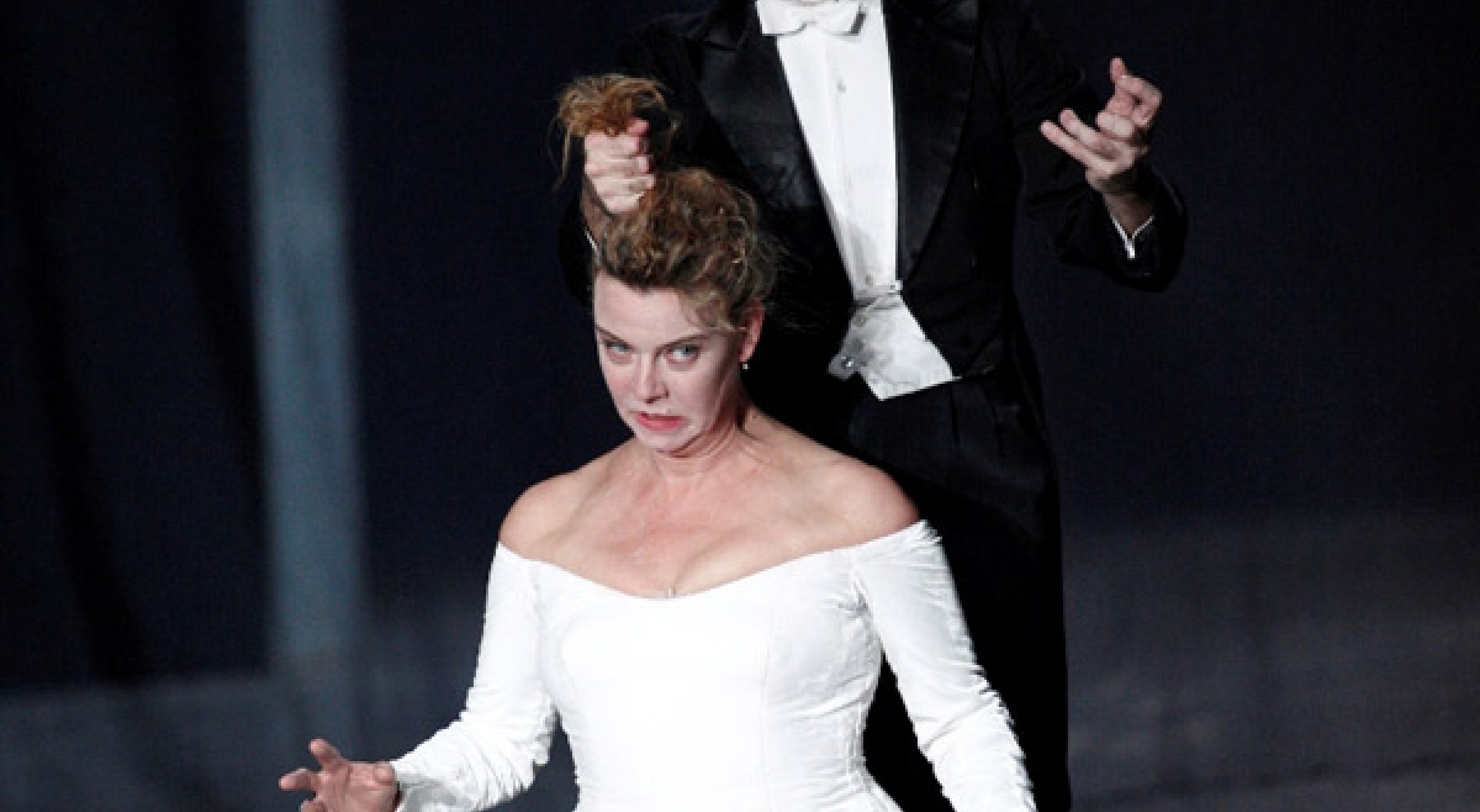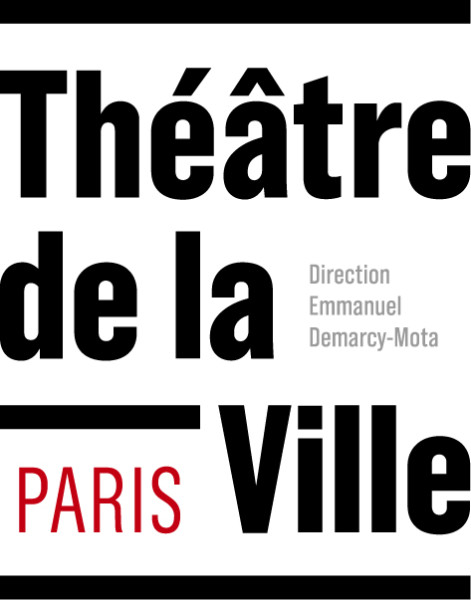Bertolt Brecht / Heiner Müller
La Résistible Ascension d’Arturo Ui
Archive 2012
Théâtre de la Ville – Sarah Bernhardt
septembersept 24 – 28
septembersept 24 – 28
1/2
Director, Heiner Mü̈ller
Stage and costumes, Hans Joachim Schlieker
Dramaturgy Assistant, Stephan Suschke
Light, Ulrich Eh
Assistant Director, Nicole Felden
Prompter, Eva-Maria Bö̈hm
Stage Manager, Angelika Ritter
Technical Director, Stephan Besson
Sculpture, Jurij Mirtschin
Costume Manager and Make-up, Barbara Naujok
Mask, Ulrike Heinemann
Tone, Alexander Bramann
Music, Schubert, Paperlace, Verdi, Liszt, A. v. Klebsattel, Mozart et Wagner
With Martin Wuttke, Martin Schneider, Volker Spengler, Martin Seifert, Stefan Lisewski, Jürgen Holtz, Margarita Broich, Roman Kaminski, Michael Gerber, Veit Schubert, Michael Rothmann, Uli Pleßmann, Thomas Wendrich, Detlef Lutz, Jörg Thieme, Axel Werner, Heinrich Buttchereit, Michael Kinkel, Victor Deiß, Uwe Preuss, Ruth Glöss, Uwe Steinbruch, Larissa Fuchs, Stephan Schäfer
Production Berliner Ensemble
Corealisation Théâtre de la Ville-Paris ; Festival d’Automne à Paris
With the Tandem Paris-Berlin organised for the 25 years of friendship between the cities of Paris and Berlin
Partnership with France Inter
Premiered in 1995 at the Berliner Ensemble (Berlin)
Written during Hitler’s rise to power, Brecht’s Arturo Ui depicts the dictator as a Chicago mobster who takes over the powerful cauliflower trust. This new production of Heiner Müller’s staging in 1995, starring Martin Wuttke – a key figure of the Berliner Ensemble –, reflects on the role of images in propaganda and makes Brecht’s parable resonate with today.
In the same place


